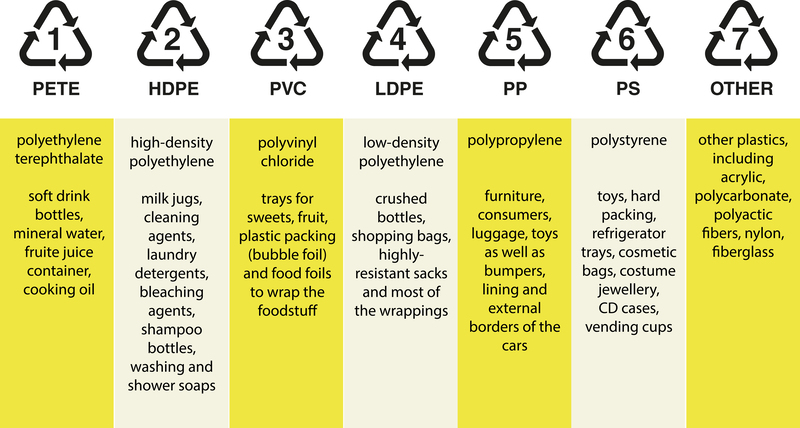Uncontrolled Waste and Urban Decay
Posted on 20/03/2025
In the sprawling cities of the modern world, urban decay and uncontrolled waste present a significant challenge to both residents and policymakers. These two phenomena, deeply intertwined, are critical to understanding and combating the degradation of urban environments. This article explores the origins, impacts, and potential solutions for uncontrolled waste and urban decay.
Understanding Urban Decay
Urban decay refers to the process whereby a previously functioning city, or part of a city, falls into disrepair and decrepitude. This can stem from various reasons such as economic downturns, dedensification, suburbanization, structural racism, and the neglect of essential public services. One major consequence of urban decay is the proliferation of abandoned buildings and vacant lots, which often act as magnets for crime and illegal dumping.

Roots of Uncontrolled Waste
Uncontrolled waste, conversely, refers to waste materials that are not properly managed or disposed of. This type of waste accrues in open spaces, abandoned buildings, streets, and other public areas, leading to unsightly urban landscapes and posing health risks. Some of the roots of uncontrolled waste include inadequate waste management infrastructure, lack of public awareness, weak policy enforcement, and rapid urbanization that outpaces the development of necessary waste disposal services.
The Interplay Between Waste and Decay
The interrelationship between uncontrolled waste and urban decay is intricate. Areas suffering from urban decay often lack the resources or efficient governance to manage waste effectively. This leads to higher instances of illegal dumping and improper waste disposal. Conversely, the presence of uncontrolled waste contributes to urban decay by degrading the environment, making areas less attractive for investment and habitation, and fostering a cycle of neglect.
Health and Environmental Consequences
The health implications of uncontrolled waste and urban decay are significant. Accumulated waste can serve as breeding grounds for various vectors such as mosquitoes and rodents, leading to the spread of diseases like dengue fever, malaria, and leptospirosis. In addition, decaying urban areas often have poor sanitation infrastructure, exacerbating the problem. From an environmental standpoint, uncontrolled waste can lead to soil and water contamination, harming local ecosystems and making urban areas less sustainable.
Socio-Economic Impacts
Urban decay and uncontrolled waste also have severe socio-economic impacts. These phenomena tend to disproportionately affect low-income communities and marginalized groups, perpetuating cycles of poverty and inequality. Property values in affected areas decline, leading to reduced investment and economic opportunities. Public services such as schools, hospitals, and transportation suffer, further diminishing the quality of life for residents.
Strategies for Combatting Uncontrolled Waste and Urban Decay
Tackling the issues of uncontrolled waste and urban decay requires a multi-faceted approach involving policy-making, community engagement, technological innovation, and sustainable practices. Here are some strategies that can be employed:
Policy and Governance
Effective policies and strong governance are paramount in addressing these issues. Governments must enact and enforce stringent regulations on waste management while ensuring that there are adequate facilities for proper waste disposal and recycling. Urban planning that prioritizes the maintenance and rejuvenation of public spaces can also help mitigate urban decay.
Community Engagement
Communities play a crucial role in combating uncontrolled waste and urban decay. Public awareness campaigns can educate residents on the importance of waste segregation, recycling, and proper disposal. Community-led clean-up initiatives can foster a sense of ownership and stewardship, encouraging residents to take active roles in maintaining their environments.
Technological Innovations
Technology offers promising solutions for managing waste and revitalizing urban spaces. Smart waste management systems that use sensors and data analytics can optimize waste collection routes and ensure timely disposal. Drones and AI can be used to monitor areas prone to illegal dumping and decay, enabling quicker responses. Additionally, sustainable building practices and green infrastructure can rejuvenate decaying urban areas.
Sustainable Practices
Adopting sustainable practices is key to long-term solutions. This involves encouraging the use of biodegradable and recyclable materials, promoting circular economy principles where waste is minimized and reused, and integrating green spaces into urban planning. Sustainable practices not only help in reducing waste but also enhance the aesthetic and environmental quality of urban areas.

Case Studies: Success Stories
Freiburg, Germany
Freiburg is often cited as a model for sustainable urban living. The city has implemented robust waste management systems that promote recycling and composting. Public policies focus on maintaining green spaces and ensuring that urban development is environmentally friendly. Community participation is high, with residents actively involved in maintaining the cleanliness of their surroundings.
Medellin, Colombia
Once notorious for its crime rates and urban decay, Medellin has undergone a remarkable transformation. The city invested in public transport, improved waste management systems, and focused on inclusive urban planning. Today, it stands as an example of how targeted policies and community engagement can turn around urban decay.
Conclusion
Uncontrolled waste and urban decay are pressing issues that demand immediate attention. The impacts on health, the environment, and socio-economic conditions are profound. However, with coordinated efforts involving policy reforms, community engagement, technological innovations, and sustainable practices, these challenges can be effectively addressed. By learning from successful case studies and implementing comprehensive strategies, cities can revitalize their urban landscapes and provide healthier, more sustainable environments for their residents.




 020 3743 9508
020 3743 9508


